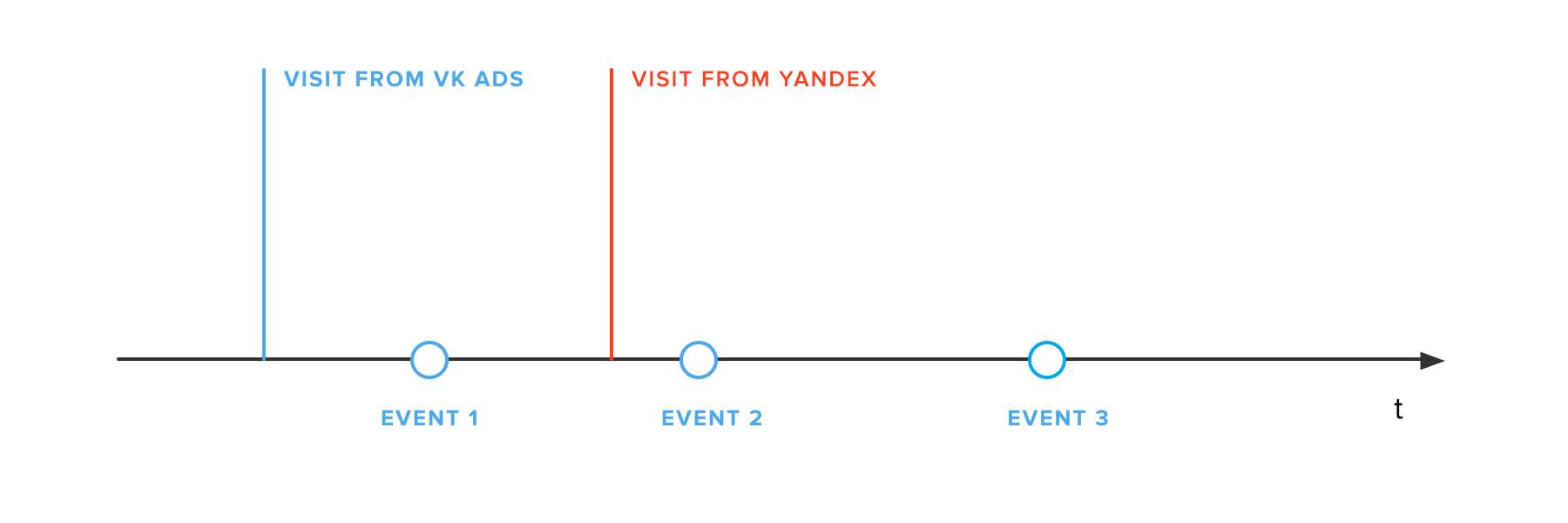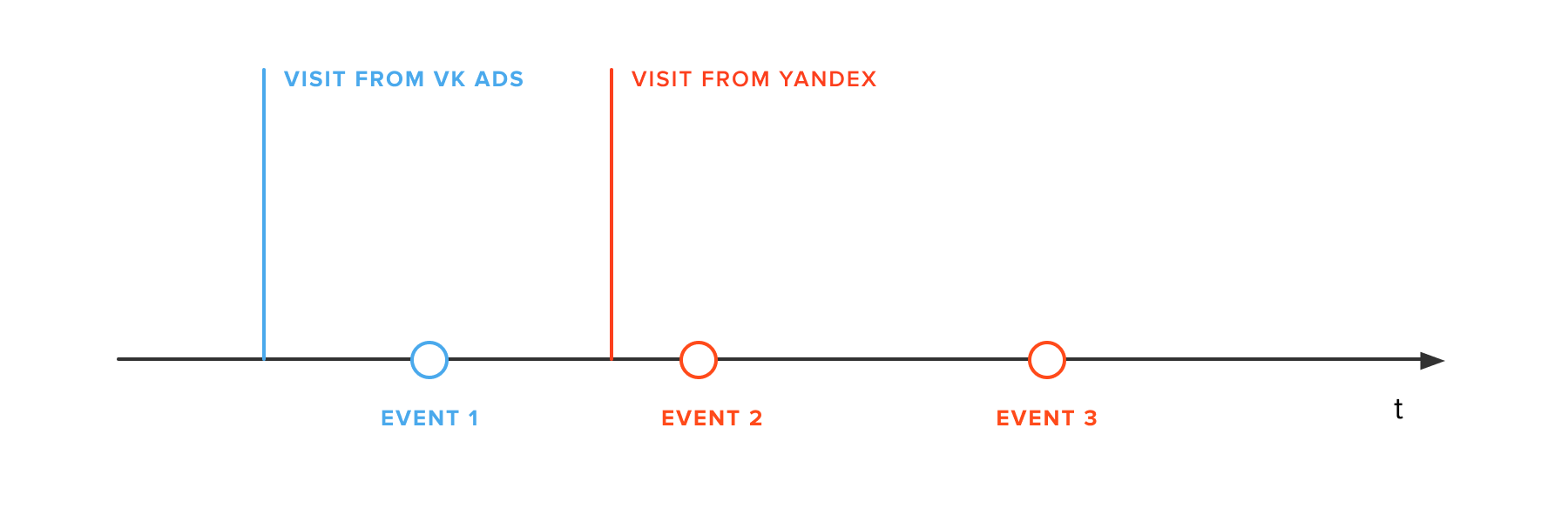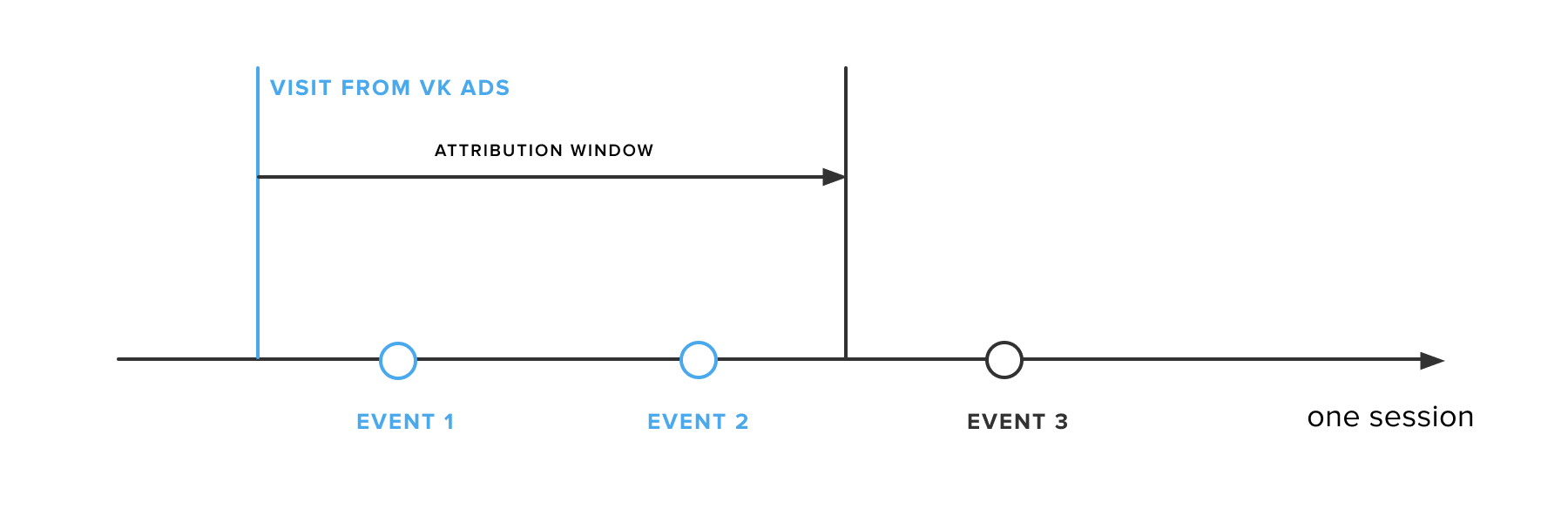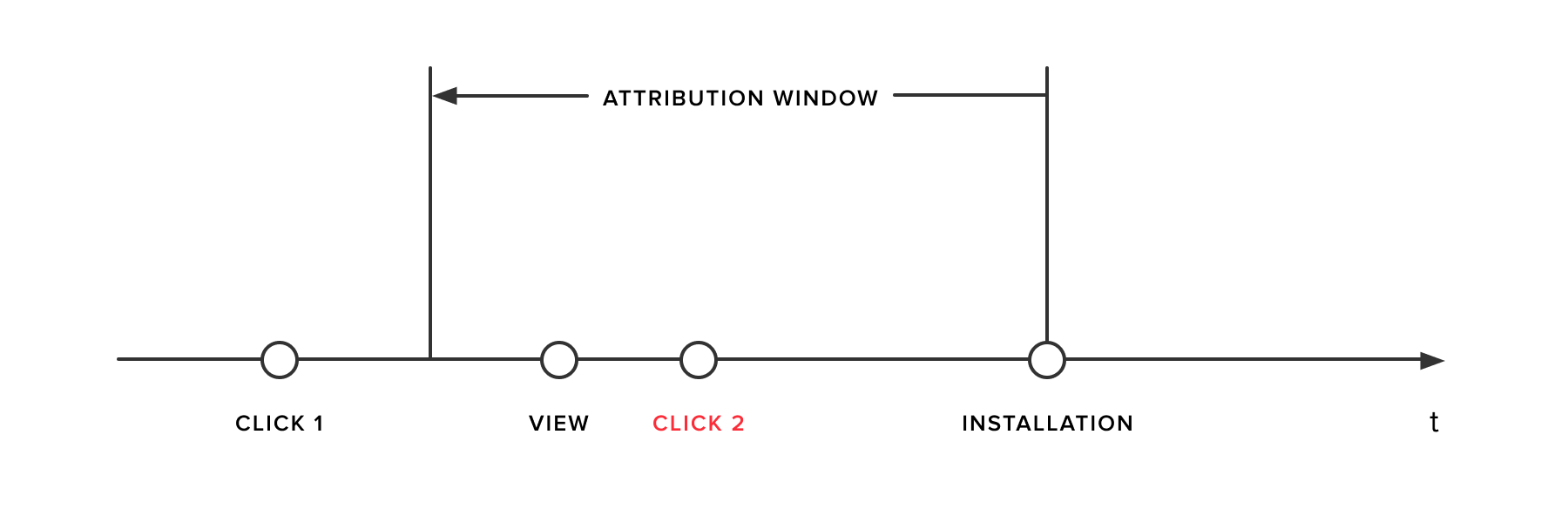Attribution links new users to acquisition sources. In other words, attribution identifies campaigns, partners, and channels that result in new installs, user registrations, and site visits.
Based on the attribution results, you can measure the performance of your marketing campaigns and improve the traffic quality.
In general, attribution may be described as follows:
The attribution features for different platforms are described below. See also Attribution methods and Settings.
MyTracker logs every visit to your site. If the visitor went to the site via a tracking link or a link with UTM tags, the traffic will be classified as advertising, otherwise — as organic.
Attribution occurs only with the start of a new session. During an active session, visits from new sources will not result in new attributions. For example, if the user accidentally closes the tab with the site and opens it directly (the session will not have time to end) — the user events will continue to refer to the source of the original visit.
The attribution results can be interpreted using two models: the first visit and the last visit.
For web attribution, add web counter on your website and use tracking links or UTM tags in campaigns. For details, refer to the Web tracking section.
According to the first visit model, all visitor events are attributed to the source of the first visit. During the user's lifetime.
For example, in the figure below, all events will be attributed to the visit from VK Ads.

To analyze data based on the first visit model, MyTracker provides LT (LifeTime) and Flow metrics. For example, the Event LT metric will show the total number of events by visitors attracted during the selected report period. And the Event (Flow) metric shows the number of events made during the report period.
Under the last visit model, all visitor events are attributed to the source of the last visit until the attribution window ends.
For example, in the figure below, the first event will be attributed to the visit from VK Ads. The second and third will be attributed to the last visit from Yandex.

To analyze data based on the last visit model, MyTracker provides AT and CA metrics. For example, the Event AT metric will show the total number of events by visitors attracted during the selected report period. And the Event AT metric shows the number of events made during the report period.
The attribution window is delayed from the beginning of the session forward. Until the attribution window ends, all visitor actions will be attributed to the source of their last click.
For example, in the figure below, the first two events will be attributed to the visit from VK Ads. The third event is not in the attribution window, so it will be attributed to Organic.

The size of the attribution window affects the number of events that will be attributed to the advertising partner. The larger the window, the more events will be attributed to the partner.
For attribution window settings, session timeout, and organics accounting, see the Attribution settings section
MyTracker receives installation data when the app is first launched. If the installation was preceded by a click or view of an advertisement on the device, the source of installation will be considered an advertising partner, if not — organic.
MyTracker uses the last click attribution model that links app installation to the last click on the ad. Post view conversions are also supported, and in case a click is not found, attribution works on ad impressions.
For mobile attribution, integrate the MyTracker SDK into your app and use tracking links in campaigns.
Post click attribution is based on specific user actions, such as clicking on a link, banner, etc. Whenever you have a Click URL embedded in an ad, MyTracker will track click conversions.
Post view attribution does not imply direct user-ad interaction. MyTracker merely links two events — an ad view and subsequent app installation or first website visit.
To enable Post view attribution, the ad network must support impression pixels. Such pixels are downloaded when users view ads and log device properties that may be used to associate ad views with app installs and first website visit.
Post click tracking ranks higher than Post view, since the latter is less accurate and prone to fraud. Attribution is always based on a click, even if the last event is a view. Only if there are no clicks at all is view-through attribution possible.
An app install can be associated with an advertisement if MyTracker finds an ad impression or click in the attribution window.
The attribution window is the time delayed from an installation into the past, during which the installation can be attributed to an advertisement. If a click or impressions is found in the window, the installation and subsequent user actions will be attributed to the ad source. If there are no events, the traffic source is considered organic.
For example, if you have two marketing partners, and several clicks and impressions have been tracked, only the last event within the attribution window (Click 2) will be attributable.

In general, the size of the attribution window affects the audience size attributed to a marketing campaign: a larger attribution window results in more events attributed to tracking links, while a smaller window would result in a higher number of organic events that are not associated with any marketing campaign.
For more details on configuring attribution windows, refer to Attribution settings
MyTracker also supports cross-platform attribution. If your project has user authorization and registration, MyTracker can determine the source that led to the first appearance of a user in your project — on the website or in a mobile application.
A "new user" event is logged when MyTracker tracks the first event with the user ID. This can be a registration, launch, payment, custom event, etc.
User attribution goes through its own mechanisms,
independent of mobile and web attribution,
by methods: Android Referrer,
Device ID matching (by gaid/idfa identifiers on mobile platforms and lvid on the web), Cookie-matching, Probabilistic.
For user attribution, pass user identifier through MyTracker SDK or web counter and use tracking links in campaigns. For details, refer to the User tracking section
MyTracker supports attribution on VK Play and VK Mini Apps platforms. If a user's appearance was preceded by a click on an advertisement, the traffic will be attributed to advertising, otherwise it will be attributed to organics.
A "new platform user" event is logged when MyTracker tracked the first event (a launch, payment, custom event, etc.) with the user ID:
vk_id + idApp in the VK Mini Apps platformsezam_id + idApp in the VK Play platformFor platform user attribution, add your app to MyTracker and use tracking links in campaigns. For details, refer to the Platform user tracking section